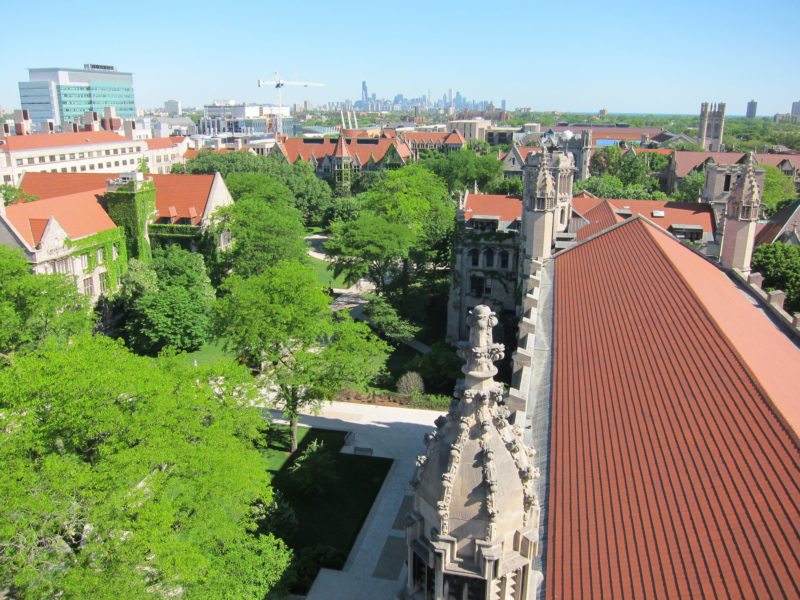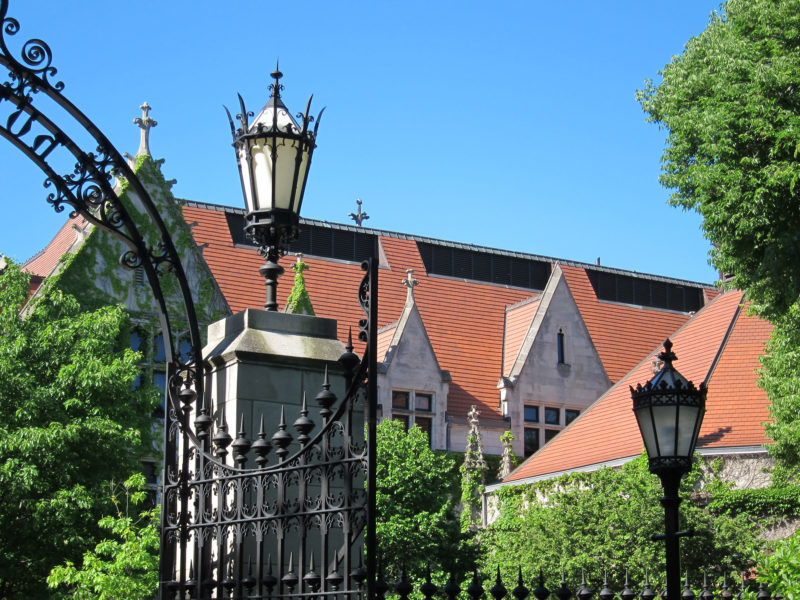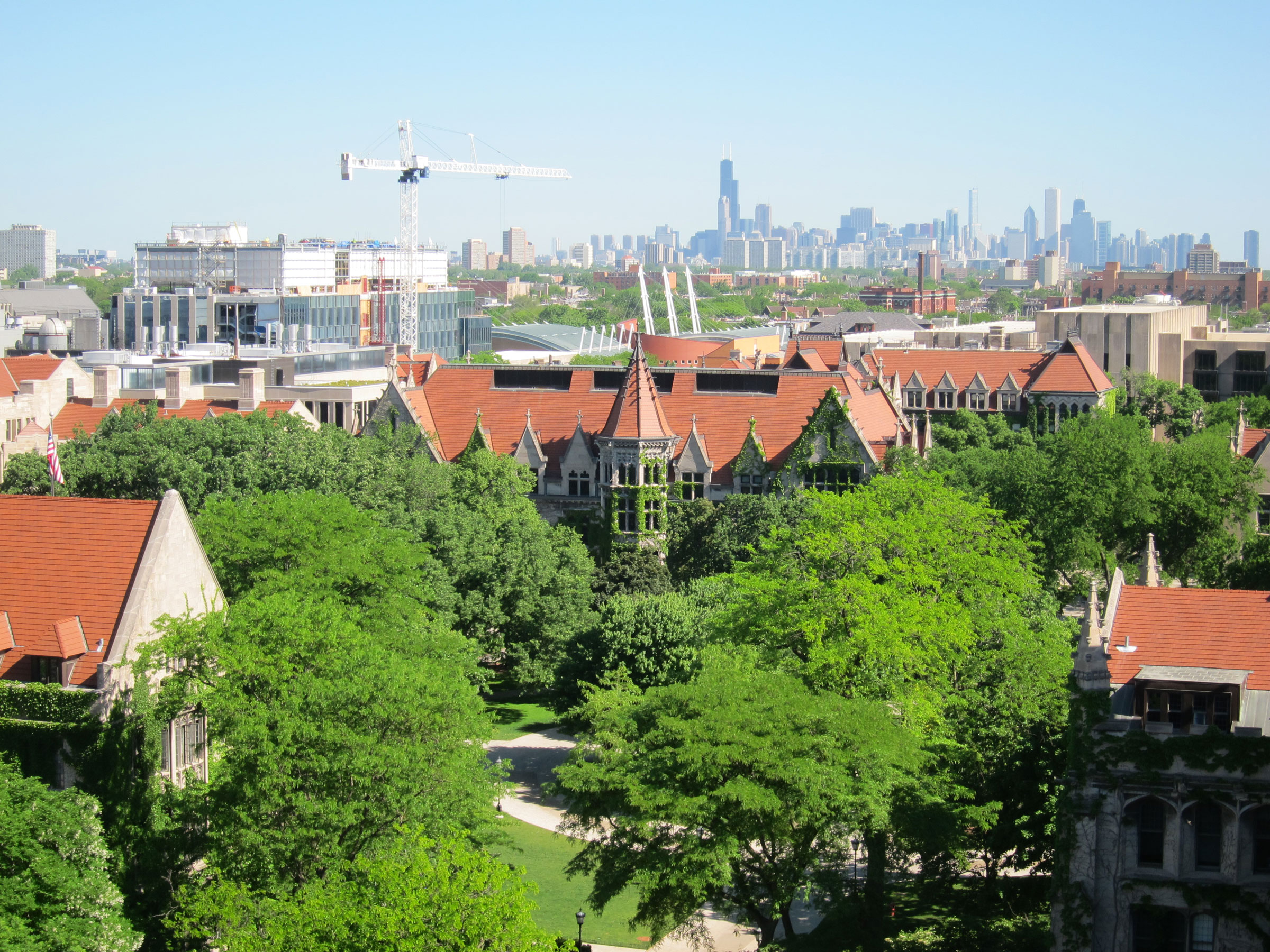Story at a glance:
- The University of Chicago’s iconic red roofs receive an update with Ludowici clay tiles.
- The university first had the terra-cotta on its roofs 100 years ago, and they continued to hold up a century later, unlike their underlayment.
- Ludowici has one of the lowest moisture-absorbent rates on a clay tile.
At the start of a 17-year-long project, Barry O’Quinn—former senior manager of building envelope and campus trade shops at the University of Chicago—aimed to replace every clay tile roof on campus. But as he looked into fixing the first of the roofs’ consistent leaks, he discovered why no one had tackled it before—the price.
When he told the University of Chicago’s executive officers and finance teams that repairing the campus’ Oriental Institute Museum roof would cost around $4.2 million, “They fell out of their chairs,” O’Quinn says. Re-tiling the roofs of another 23 buildings after that one would cost $150 million.
The red clay tile on the roofs of these buildings, all installed by Ludowici around 100 years ago, was still intact. But below it the underlayment was well past its prime, allowing water to seep into buildings across campus. “The product didn’t fail; it was everything with the product that failed,” O’Quinn says. “In 30 years a couple buildings probably would’ve fallen down.”
Though these 24 buildings had slanted roofs that shed water, they weren’t waterproof. After a century rain seeped through the tile, wore away copper, and saturated the felt underneath the tiles, which secured them to the roof. And there was no through-wall flashing, which diverts the moisture that seeps through the tiles back outside before it causes damage. After replacing the roofs’ underlayments, the university needed new Ludowici tiles, as the old ones no longer fit over the new underlayment.

Photo courtesy of Ludowici
In an effort to convince his higher ups to replace the clay tile with the same material, O’Quinn asked if they expected the campus buildings to still exist in 100 years. When they answered “yes,” he followed up. “So why not go back to a product you know is going to be here in 100 years?”
For O’Quinn that product was the same one he wanted to replace on the roofs. Founded two years before the University of Chicago, in 1888, Ludowici provided its Classic Interlocking 14-inch terra-cotta tile for the campus’ 24 buildings. The tile company made them from the same mud vein in Ohio that the old roofs’ tiles were constructed from a century ago, using the same process of digging up dirt, pressurizing it, then baking it.
O’Quinn received the $150 million for the project, plus a yearly influx of money since even that didn’t cover the roof damage, largely because of Ludowici tiles’ environmental and financial benefits.

Photo courtesy of Ludowici
“Clay tile gets as many LEED points as carpet, which I don’t think is fair,” O’Quinn says. “There’s no more sustainable product than clay tile.” And its previous 100-year life cycle on the University of Chicago’s campus proves that.
Though all clay rejects moisture, O’Quinn says, “Ludowici has one of the lowest moisture-absorbent rates on a clay tile, and that’s why I believe their tile lasts so long.”
At their factory, Ludowici demonstrates the difference between their tile and other manufacturers’ tile with a moisture test. They leave both tiles in water for 24 hours before taking them out and measuring moisture content. O’Quinn says he’s seen that Ludowici tiles are up to 30 times less absorbent than other manufacturers’.
Repelling moisture becomes especially relevant in a freeze-thaw environment like Chicago, where weather can easily cause material to break down. Even after taking on rain and snow, Ludowici clay tiles will dry out and not fade over time, maintaining appearance with minimal maintenance. This means terra-cotta tiles are mold- and mildew-resistant and don’t require a topcoat sealant. They’re also fire-resistant, and the sun doesn’t affect them to any conceivable degree, unlike steel, concrete, and paint.

Photo courtesy of Ludowici
Though clay tile might be more expensive than a plastic counterpart that looks similar, the cost of materials is often less than 10% that of the project’s total cost—most of which can be attributed to the price of labor and scaffolding. And, in the long run, clay tiles are often more cost effective than inferior products, whose installation costs occur three times as often due to constant maintenance and replacement.
“Why would I buy a material that’s not been around for 100 years?” O’Quinn asks. “And why would I take the chance to buy a cheaper product, put it on, and have to replace it sooner?”
O’Quinn says the 17-year-long project drastically improved the appearance and functionality of buildings around the University of Chicago’s campus. “You could probably figure out if replacing the roofs helped the University of Chicago get more applications,” he says. “There are those who think so because not long after I started the roofs, the main campus at the university became a certified botanical garden.”
Project Credits
Project: University of Chicago
Location: Chicago
Completion: 2021
Roofing: Ludowici
Engineers: Inspec Inc. and ZS Architectural Engineering
Contractors: Jones & Cleary Roofing and Sheet Metal, Knickerbocker Roofing and Paving


